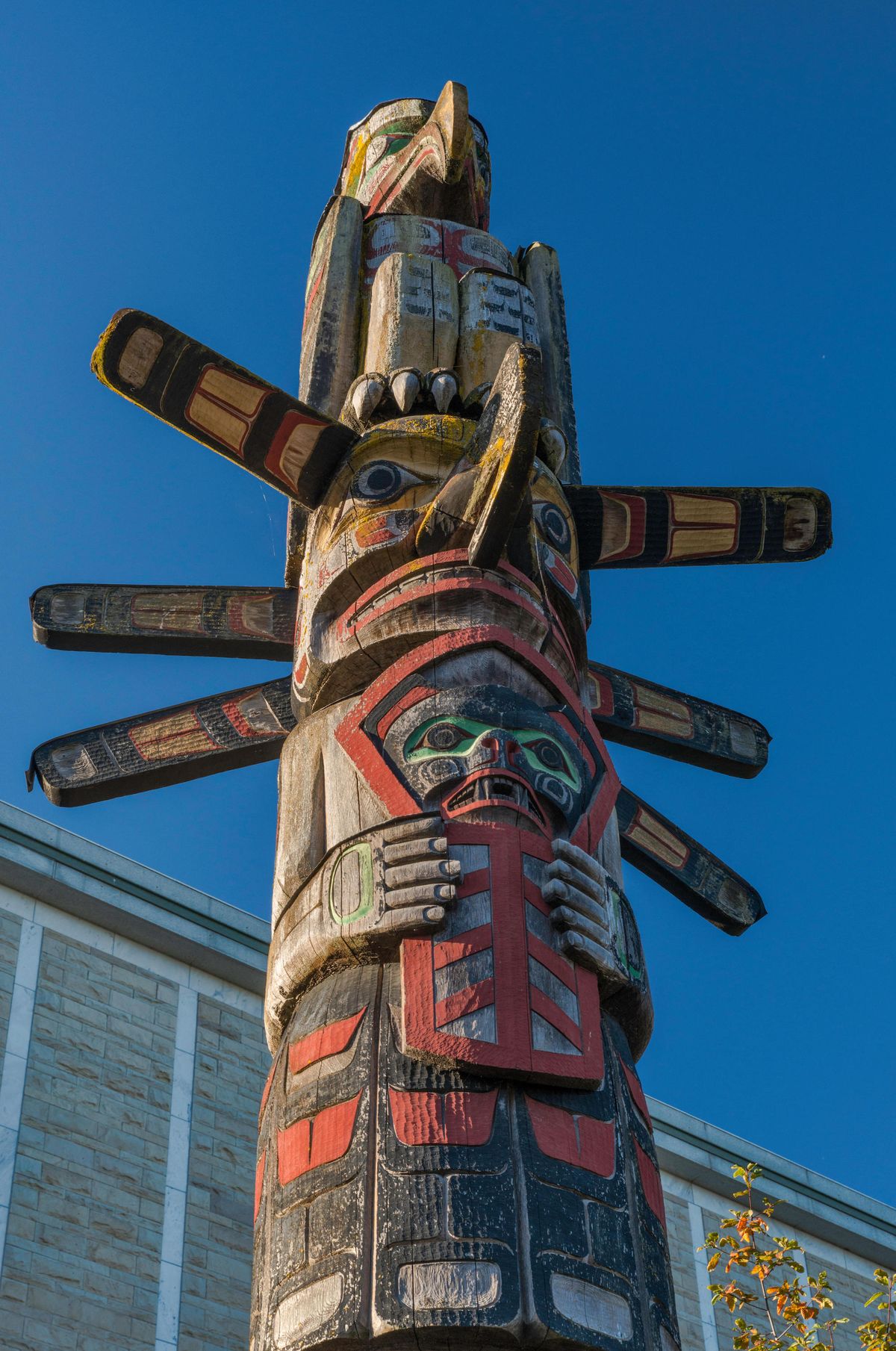An unchecked market of counterfeits of First Nations art and artefacts is fueling calls for the Canadian government to ramp up regulation. According to a report by CBC, artists are pressuring officials to clamp down on imported knockoffs, many from eastern Europe and Asia, arguing that Indigenous artists have lost millions of dollars from sales that also take advantage of unsuspecting buyers.
Kwakwaka’wakw artist Richard Hunt, who is known for his vibrant wood carvings, tells CBC that he has had to stop others from creating postcards with images of his work without permission. “In Bali, Indonesia, they are making Northwest Coast masks. They are selling them as Indigenous,” he says. “These things have got to be stopped. We need the government's help.” Hunt adds that raising import tariffs is one way to combat imports, but the mass production of knockoffs has burgeoned into a $1bn industry that harms the livelihood of young First Nations carvers.
Lou-Ann Neel, a Kwagiulth artist, also tells CTV News that these counterfeits, which range from objects claiming to be authentic to paraphernalia that carry Native imagery, harm artists by reducing market prices. “I’ve worked in galleries all through my life where an artist comes in asking for what I think is a fair price for an original work, but they have to settle for less because some other company—that has nothing to do with our communities—is cranking out thousands of pieces similar to it and then drives the prices down,” she says.
A movement to curtail the torrent of fakes and penalise their makers has been swelling in recent years, with efforts largely driven by the late artist Lucinda Turner. Turner, a British Columbia artist who passed away 4 July, had been steadily working since 2017 to track down copycat works, predominantly those claiming to be by Indigenous Northwest Coast (NWC) artists. Some fakes she identified include reproductions of works in major institutions, from a beaver rattle in the British Museum’s collections to several copies of carvings by NWC Haida artist Bill Reid.
“We believe that it is time for the Canadian government to introduce much-needed legislation and policies to uphold and protect Indigenous intellectual property and copyrights through stricter laws and enforcement, enabling Indigenous artists to support their families, communities and cultural heritage through the production and sale of their historic and unique art form,” Turner wrote in a November 2020 open letter addressing the Canadian government.
The artist’s research began when she found copies of art for sale by Nisga’a sculptor Norman Tait, with whom she had apprenticed and later collaborated. On Facebook, Turner created a group called Fraudulent Native Art where she and thousands of members identified fakes and sought the removal of items that were sold online that copied or appropriated existing NWC designs. They successfully removed more than 1,000 items, including T-shirts, cups and pillows.
“We were able to ‘take-down’ these stolen designs by sending official Digital Millennium Copyright Act (DMCA) letters to the offending sellers or directly to the host companies advertising on the internet,” Turner wrote in her letter. “However, whether the ads are ‘taken down’ or not, the artists are rarely compensated for the theft of these images and the practice continues while the original artists go unrecognised and exploited.”
Turner also describes the widespread sale of fraudulent items by Canadian tourist sites, gift shops, and other vendors who market them as “Northwest Coast style” and mislead buyers. “These practices of theft and misrepresentation hurt NWC Indigenous communities and misinform and confuse the public about the origin of the art,” she writes. “The US and Australia have made advances in this area, and we insist that Canada can, and must, do more to protect the livelihood and cultural identity of Canadian Indigenous artists, too. Canada needs legislation, strategies and monetary penalties in order to curtail and discourage these destructive practices.”
Echoing Turner’s demands is Senator Patricia Bovey, the first art historian and museologist to be appointed to the Senate of Canada. Bovey has recently called for a reform to Canada’s Copyright Act to better protect Indigenous artists whose works have been stolen and sold as authentic. While the current law offers some protections, Bovey tells CBC that few artists seek recourse because the process is so complex and time-consuming. An additional solution, she says, would be to create a unit that helps artists track down the parties responsible for knock-offs so they can seek payment. The senator is also calling for stronger checks on imports by border patrol. The Canada Border Services Agency tells CBC that there are currently “no import restrictions related to items that imitate Indigenous art”.
Many advocates of tighter restrictions in Canada point to measures in the United States to deter counterfeits of Native art. The Indian Arts and Crafts Act of 1990, for instance, criminalises the misrepresentation in the marketing of Native art and craft products in the country. Potential violations of the Act can be reported on the US Department of the Interior’s website through a simple form.
To better equip artists to manage their works and intellectual property rights, Turner had also proposed the creation of an Indigenous Artists Registry using blockchain technology to record an artist’s portfolio and biography. This would “[provide] artists with a place to document designs, control ownership, establish provenance, and track works as they are sold”, she wrote.


